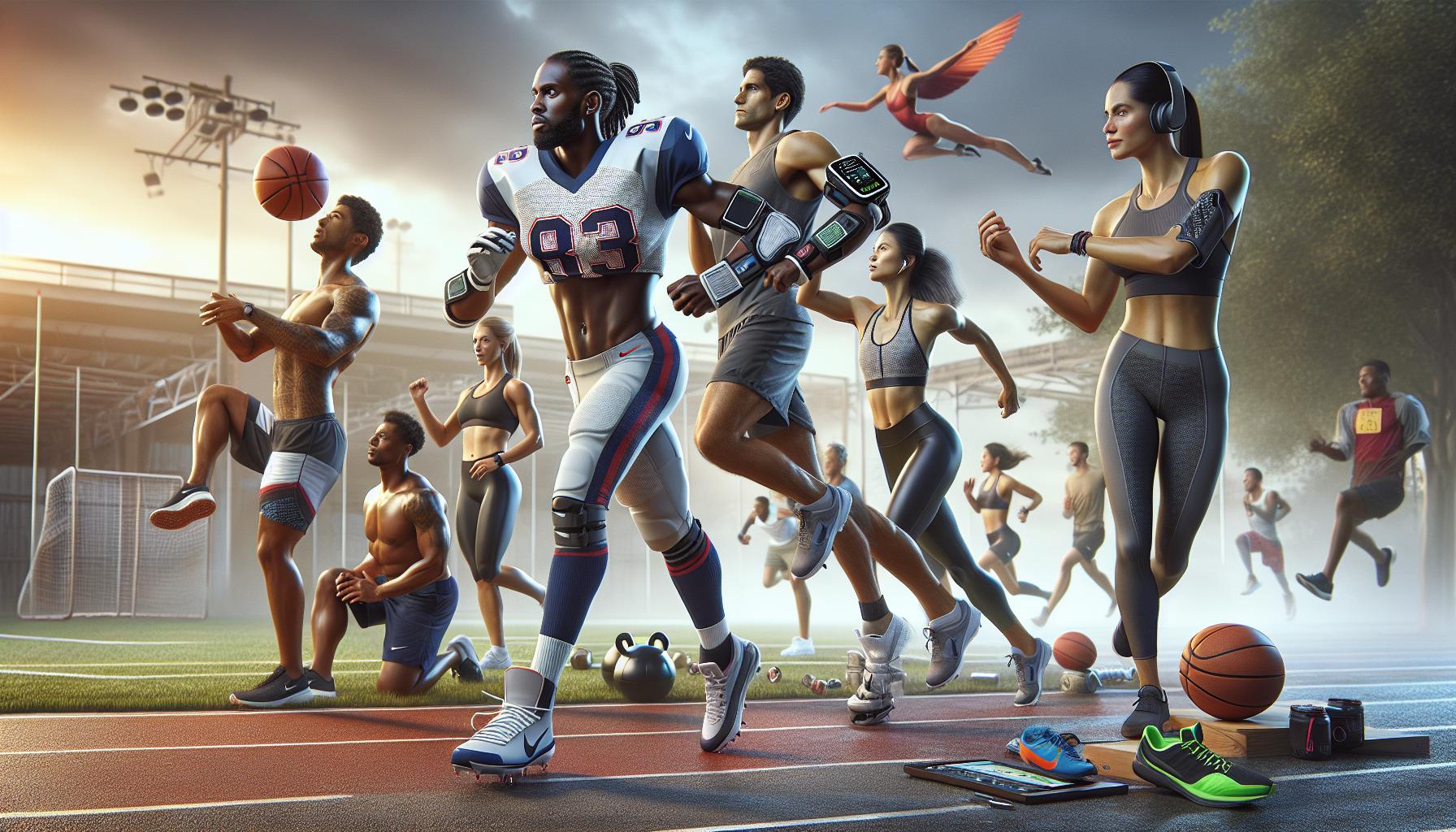In the past three decades, sports have transformed in ways that would make even the most seasoned sports fan do a double take. From the rise of analytics that turn players into walking spreadsheets to the explosion of social media that brings fans closer to their favorite athletes than ever before, the game has changed significantly. These trends aren’t just buzzwords; they’ve reshaped how we watch, play, and even think about sports.
As the world of athletics evolves, two major trends stand out like a referee with a yellow card. The increasing focus on data-driven performance and the growing influence of technology in fan engagement have not only changed how games are played but also how they’re experienced. Buckle up as we dive into these game-changing trends that have redefined the sporting landscape over the last thirty years.
The Two Major Trends in Sport That Characterize The Past 30 Years Are
The past three decades have seen substantial changes in sports, primarily driven by two trends: data-driven performance and technology’s role in fan engagement. Organizations utilize analytics to enhance player performance and team strategies. Coaches and analysts rely on statistical models and real-time data to make informed decisions during games. Athletes now engage with advanced metrics, pushing their training regimens based on insights from performance analytics.
Technology significantly influences how fans connect with their favorite teams and players. Real-time updates and interactive platforms allow people to follow games closely. Social media serves as a critical tool for athletes, fostering direct communication with fans. Engaging content shared on these platforms amplifies the visibility of sports events.
Streaming services revolutionize how audiences consume sports. With the option to watch games on various devices, fans enjoy greater flexibility. Televised events now include advanced graphics, providing viewers with insights into player stats and game strategy. Virtual reality and augmented reality create immersive experiences, enhancing spectator enjoyment.
The impact of data and technology reshapes sports culture. Traditional viewership models are challenged by the rise of digital engagement, leading to a more personalized fan experience. As athletes embrace data analytics and fans turn to technology for deeper connections, the future of sports continues to evolve dramatically.
Trend One: Professionalization of Sports

Professionalization significantly transformed the sports landscape over the past 30 years. This shift encompasses substantial financial, organizational, and cultural changes within various sports.
Rise of Athlete Salaries
Athlete salaries surged dramatically, reflecting the increasing value placed on top performers. In 1990, the average salary for a Major League Baseball player was approximately $1 million; by 2020, it exceeded $4 million. Compensation for star athletes now includes substantial endorsement deals, further elevating their earning potential. High-profile contracts often garner media attention, influencing public perceptions of athlete worth. Teams invest significantly in talent, recognizing that elite athletes directly impact game outcomes and fan engagement. As a result, salary structures evolved, promoting competition among franchises to attract and retain talent. Such financial dynamics underscore the importance of professionalization in modern sports.
Increased Media Coverage
Media coverage expanded over the past three decades, transforming how fans consume sports content. Numerous platforms, including cable networks and digital streaming services, provide extensive live coverage of games and events. In the early 1990s, only a handful of sports received widespread televised exposure; now, even niche sports attract dedicated audiences. Data shows that Super Bowl LIV garnered over 96 million viewers, exemplifying the power of media to engage fans. Social media platforms serve as additional channels, allowing athletes to connect directly with audiences. Enhanced coverage enables fans to access real-time updates, interviews, and analysis, fostering a more immersive experience. The growth in media presence fundamentally altered the relationship between sports organizations and their fanbases.
Trend Two: Emphasis on Health and Fitness

The past three decades have seen a significant shift towards health and fitness in sports. This focus reflects a broader societal commitment to improving individual well-being through physical activity.
Growth of Recreational Sports
Recreational sports have surged in popularity as more people embrace active lifestyles. In 2020, approximately 57% of American adults participated in at least one type of sport or physical activity. This rise encourages community engagement, as local leagues and clubs provide opportunities for players of all skill levels. Options range from casual pickup games to organized tournaments, fostering a sense of camaraderie and healthy competition. Additionally, the increased availability of facilities and programs makes sports more accessible to diverse populations, contributing to improved public health outcomes.
Influence of Technology on Training
Technology significantly influences training regimens for athletes at all levels. Wearable devices track vital metrics such as heart rate, sleep quality, and activity levels, allowing athletes to personalize their training. In 2023, over 30 million wearables were sold in the United States, reflecting their growing impact on training strategies. Various mobile apps offer workouts tailored to individual fitness goals, enhancing motivation and accountability. Moreover, virtual coaching and online resources provide athletes access to expert knowledge regardless of geographic location. This technological integration promotes a data-driven approach to training, optimizing performance while ensuring overall health and fitness.
Societal Impact of These Trends

The societal impact of analytics and technology in sports is profound. Both trends shape how communities engage with athletic performance. Data-driven performance enhancements allow athletes to excel in ways previously thought unattainable. Metrics have transformed training programs, helping athletes identify weaknesses and strengths.
Engagement through social media fosters a direct line between fans and athletes. Communication via platforms like Twitter and Instagram offers fans insights into athletes’ lives, influencing public perception and sponsorship opportunities. Increased visibility empowers athletes, providing avenues for personal branding through endorsements.
Financial ramifications also deserve attention. A surge in athlete salaries reflects the growing revenue within professional sports. Over the last three decades, average salaries for Major League Baseball players more than quadrupled, highlighting the lucrative environment athletes navigate today. Organizations invest significantly in talent development and scouting, underlining the relationship between financial resources and on-field success.
Health and fitness trends also integrate into this discussion. An impressive 57% of American adults engaging in recreational sports in 2020 underlines a societal shift toward physical well-being. Accessible sports programs cultivate community spirit, encouraging participation across various demographics.
Wearable technology enhances individual training regimens, allowing athletes to track vital metrics. The rise of mobile fitness apps personalizes workout experiences, catering to diverse fitness levels and objectives. These advancements support a data-driven approach that prioritizes health, enhancing overall athletic performance.
Sports culture continues to evolve, driven by these trends. Analytics, technology, and a commitment to health redefine how athletes perform and how fans interact. This evolution ultimately reshapes the sporting landscape, resulting in a richer, more interactive experience for all stakeholders.
Transformative Changes Driven by Analytics and Technology
The past 30 years have seen sports undergo transformative changes driven by analytics and technology. These trends have not only redefined performance metrics but also revolutionized how fans engage with their favorite teams and athletes.
As data analytics become integral to training and strategy, athletes push the boundaries of performance, while technology enhances fan experiences through interactive platforms and real-time updates.
This evolution fosters a deeper connection between athletes and fans, driving engagement and reshaping the sports landscape. With a growing emphasis on health and fitness, the future of sports promises continued innovation and community involvement, ensuring that both athletes and fans thrive in this dynamic environment.



